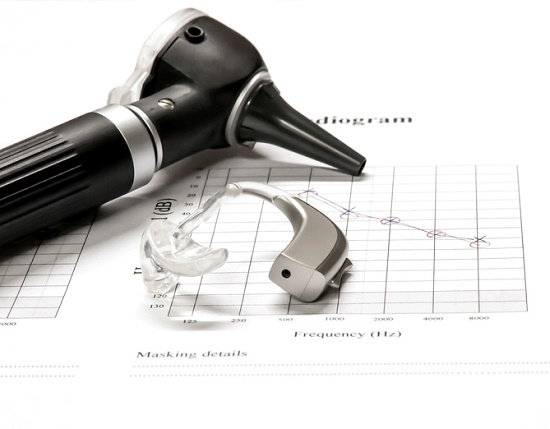
Are you planning on purchasing hearing aids?
If so, it can feel intimidating at first. There are several options out there, and the obscure terminology doesn’t help.
That’s why we’re going to describe the most common and important terms, so when you talk with your hearing professional you’ll be prepared to find the ideal hearing aid for you.
Hearing loss and testing
High-frequency hearing loss – this is the most commonly encountered kind of hearing loss. People with high-frequency hearing loss have the greatest trouble hearing higher frequency sounds, including the sounds of speech.
Sensorineural hearing loss – this type of hearing loss develops when there is damage to the nerve cells of the inner ear. This is the most prevalent form of permanent hearing loss caused by direct exposure to loud noise, aging, genetics, or other medical ailments.
Bilateral hearing loss – hearing loss in both ears, which may be symmetrical (the equivalent degree of loss in both ears) or asymmetrical (different levels of loss in each ear). Bilateral hearing loss is almost always best treated with two hearing aids.
Audiogram – the diagram which provides a visual depiction of your hearing assessment results. The vertical axis measures decibels (volume) and the horizontal axis measures frequencies (pitch). The hearing specialist documents the lowest decibel level that you can hear at each frequency. If you require higher volumes to hear higher frequencies, your audiogram will show a sequence of high-frequency hearing loss.
Decibel (dB) – the unit utilized to measure sound level or intensity. Routine conversation registers at approximately 60 decibels, and prolonged direct exposure to any sound in excess of 80 decibels could result in permanent hearing loss. Since the scale is logarithmic, an increase of 6-10 decibels doubles the volume of the sound.
Frequency – represents pitch as measured in hertz. Imagine moving up the keys on a piano, from left to right (low-frequency/pitch to high-frequency/pitch).
Threshold of hearing – The lowest decibel level that can be detected at each individual frequency.
Degree of hearing loss – Hearing loss is classified as mild (26-40 dB loss), moderate (41-55), severe (71-90), or profound (91+).
Tinnitus – a continual ringing or buzzing in the ears when no exterior sound is present. Usually an indication of hearing injury or loss.
Hearing aid styles
Digital hearing aid – hearing aids that include a digital microchip, used to custom-program the hearing aids to accommodate each individual’s distinct hearing loss.
Hearing aid style – the type of hearing aid characterized by its size and location in relation to the ear. Main styles include behind-the-ear, in-the-ear, and in-the-canal.
Behind the ear (BTE) hearing aids – the majority of hearing aid components are enclosed inside of a case that fits behind the ear, connected to an earmold by a clear plastic tube. Mini-BTE hearing aids are also available.
In the ear (ITE) hearing aids – the hearing aid components are contained within a case that fits in the external part of the ear.
In the canal (ITC) hearing aids – the hearing aid parts are contained in a case that fits within the ear canal. Completely-in-the-canal (CIC) hearing aids are also available that are nearly invisible when worn.
Hearing aid parts
Earmold – a piece of plastic, acrylic, or other soft material that is shaped to the contours of the individual’s ears, used for the fitting of hearing aids.
Microphone – the hearing aid part that picks up sound in the environment and converts the sound waves into an electrical signal.
Digital signal processor – a specialized microprocessor inside of a hearing aid that can manipulate and enhance sound.
Amplifier – the part of the hearing aid that boosts the volume of sound.
Speaker – the hearing aid component that delivers the magnified sound to the ear.
Wireless antenna – available in certain hearing aids, permitting wireless connection to compatible equipment such as smartphones and music players.
Hearing aid advanced features
Variable programming – hearing aid programming that permits the user to change sound settings according to the environment (e.g. at home versus in a busy restaurant).
Directional microphones – microphones that can center on sound coming from a specified location while reducing background noise.
Telecoils – a coil situated within the hearing aid that enables it to hook up to wireless signals emanating from telephones, assistive listening devices, and hearing loops installed in public venues.
Noise reduction – functionality that assists the hearing aid to differentiate speech sounds from background noise, resulting in the augmentation of speech and the inhibition of disruptive noise.
Bluetooth technology – enables the hearing aid to communicate wirelessly with a variety of devices, including mobile phones, computers, MP3 players, and other compatible products.
Uncertain of which features you need, or which you could live without? Let us help you discover the ideal hearing aid for your distinct requirements. Call us today!
